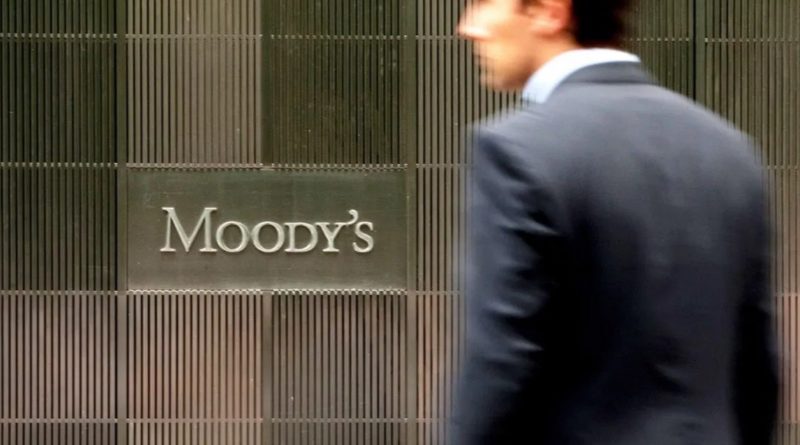Moody’s Downgrades Laos’s Rating To Caa2, Outlook Changed To Negative
Source: Yahoo Finance
Moody’s Investors Service (“Moody’s”) has downgraded the Government of Laos’s issuer rating to Caa2 from B3 and changed the outlook to negative. This concludes the review for downgrade initiated on 19 June 2020.
The decision to downgrade the rating to Caa2 reflects Moody’s assessment that Laos is facing severe liquidity stress, given sizeable debt servicing payments due this year and persisting until 2025, and constrained financing options. Heightened liquidity risk is exacerbated by weak external and fiscal buffers and poor governance, and points to a material probability of default in the near term.
The negative outlook reflects the risk of material losses to investors in the event of a default by Laos, beyond what would be consistent with a Caa2 rating. A more severe deterioration in credit fundamentals than Moody’s currently expects, potentially because of a more acute impact of the coronavirus shock, would raise the probability of default and may imply larger losses to private sector creditors.

J&C offers premium discounts on corporate medical insurance and customize health coverage for your company or group
Concurrently, Moody’s has lowered Laos’s long-term foreign-currency bond ceiling to Caa1 from B1, its long-term foreign-currency deposit ceiling to Caa3 from Caa1, and its long-term local-currency bond and deposit ceilings to B1 from Ba3.
RATINGS RATIONALE
RATIONALE FOR THE DOWNGRADE TO Caa2
HEIGHTENED FINANCING STRESS EXACERBATED BY WEAK GOVERNANCE
Laos’s government liquidity risks have increased significantly. While borrowing requirements remain moderate at about 13% of GDP, the government has not developed a credible financing strategy to meet both near- and medium-term debt payments. Financing gaps in the immediate future raise the risk of default in a challenging financing environment.
Laos’ government debt service amounts to $1.2 billion in 2020. Loans from commercial banks and Thai-baht bonds mature in September and October this year, respectively. Financing stresses are unlikely to abate given that, between 2021-2025, Laos faces debt service repayments averaging a little over $1 billion annually, including principal payments on a $150 million Eurobond due in June 2021.
The government plans to meet its debt service requirements through a combination of sizeable commercial borrowing, rollovers, and bilateral support. However, raising new borrowing at affordable costs will be very challenging in the current market environment. As a result, in the absence of financial assistance from International Financial Institutions which seems unlikely to materialize in the foreseeable future, Moody’s expects that Laos will predominantly rely on rollovers of or new commercial bank loans while reprofiling some bilateral debt.
However, the possibility that these options may fail to materialize in time raises the risk of default. To date, it is unclear how much progress has been achieved on several aspects of the government’s funding plan. Uncertainty remains around the status of bilateral discussions surrounding recent and upcoming maturities. In general, the absence of a transparent financing strategy and opacity around how maturing debt obligations have and will continue to be met, raise uncertainty about the capacity for the government to secure financing in time and at affordable costs.

The option to refinance external debt domestically would deplete further already low foreign exchange reserves, intensifying liquidity and external risks further.
FISCAL AND EXTERNAL CHALLENGES HAVE INCREASED
Government borrowing needs are compounded by wider deficits and weaker growth, as a result of the impact of the coronavirus outbreak on the manufacturing and tourism sectors.
Moody’s expects real GDP will contract 0.2% year-on-year in 2020, down from 6.7% on average over the last five years. Coupled with measures to alleviate the impact of the pandemic on small businesses and individuals, this will result in revenue shortfalls relative to the original budget. Even with efforts to cut non-essential spending, the budget deficit will widen to 6.7% of GDP in 2020, from 3.5% of GDP in 2019.
The combination of slower growth and wider fiscal deficits will lead to a deterioration in fiscal and debt metrics. Moody’s expects the debt ratio will continue to gradually edge higher, to peak at 64% of GDP in 2022 from 58% of GDP in 2019. This marks a departure from a path of gradual moderation that Moody’s expected previously. A resolution of outstanding arrears, the size of which is not publicly known, would raise the debt burden further; while non-resolution would continue to hinder economic activity at a time when companies already face a significant revenue shock.

